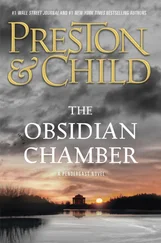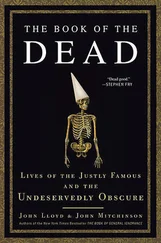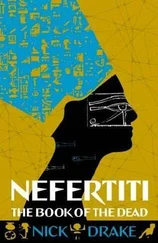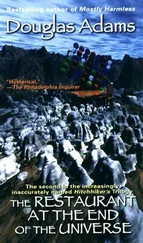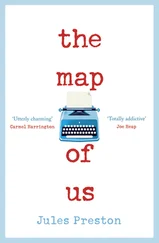Other sounds reached his sensitive ears: the clang of steel against steel; a distant gargled cry of anger; the endless repetition of a cough, coming in groups of three; footsteps of a guard on his rounds. The great prison of Herkmoor was resting but not sleeping-a world unto its own, with its own rules, food chain, rituals, and customs.
As Pendergast lay there, a trembling green dot appeared on the opposite wall: the beam of a laser, shot in through the window from a great distance. It quickly steadied itself. Then, after a moment, the dot began to blink off and on. Pendergast watched as it spelled out its coded message. The only sign of his comprehension was a slight quickening of breath toward the end of the message.
And then, as abruptly as it had come, the dot vanished. The faintly murmured word “Excellent” could be heard in the darkened cell.
Pendergast closed his eyes. Tomorrow at two o’clock he would once again have to face Lacarra’s gang, the Broken Teeth, in yard 4. And then-assuming he survived the encounter-an even greater task would follow.
Right now, he required sleep.
Employing a specialized and secretive form of meditation known as Chongg Ran, Pendergast identified and isolated the pain in his broken ribs; then he turned the pain off, one rib at a time. His consciousness moved to the torn rotator cuff in his shoulder, the puncture wound in his side, the dull ache of his cut and bruised face. One by one, with cold mental discipline, he isolated and extinguished the pain in each part.
Such discipline was necessary. A most challenging day lay ahead.
The ancient Beaux Arts mansion at 891 Riverside Drive boasted many spacious halls, but none were grander than the broad gallery that ran across the entire front portion of the second floor. The wall facing the street was composed of a series of floor-to-ceiling windows, sealed and shuttered. At each end of the hall, arched doorways led back to other parts of the mansion. Between the two doors, along the inside wall, stretched an unbroken succession of life-sized oil portraits. The gallery was lit by dim electric candelabra, which threw lambent light over the heavy gilt frames. Piano music sounded from hidden speakers: dense, lush, and demonically complex.
Constance Greene and Diogenes Pendergast walked slowly down the gallery, pausing at each portrait while Diogenes murmured the history of its subject. Constance wore a pale blue dress, set off by a black lace front whose buttons ran up to the low neckline that surrounded her throat. Diogenes wore dark trousers and a silver-gray cashmere jacket. Both held tulip-shaped cocktail glasses.
“And this,” Diogenes said as he stopped before a portrait of a splendidly dressed nobleman whose air of dignity was strangely offset by a rakish mustache, “is le Duc Gaspard de Mousqueton de Prendregast, the largest landholder in Dijon during the late sixteenth century. He was the last respectable member of the noble line which began with Sieur de Monts Prendregast, who won his title fighting in England with William the Conqueror. Gaspard was something of a tyrant: he was forced to flee Dijon when the peasants and villeins working his lands revolted. He took his family to the royal court, but a scandal ensued and they were forced to leave France. Exactly what next happened to the family remains something of a mystery, but there was a dreadful split. One branch moved to Venice, while the other-those left without favor, title, or money-fled to America.”
He moved to the next portrait, of a young man with flaxen hair, gray eyes, and a weak chin, whose full and sensual lips seemed almost the mirror of Diogenes’s own. “This is the scion of the Venice branch of the family, the duke’s son, Comte Lunéville-the title was by this point, alas, already honorary. He sank into idleness and dissipation, and for several generations his descendants followed suit. For a time, in fact, the lineage was sadly reduced. It did not regain its full flower for another hundred years, when the two family lines were reunited by marriage in America… but even that, of course, proved a fleeting glory.”
“Why fleeting?” Constance asked.
Diogenes looked at her a moment. “The Pendergast family has been in a long, slow decline. My brother and I are the last. Although my brother married, his charming wife… met an untimely end before she could reproduce. I have neither wife nor child. If we die without issue, the Pendergast line will vanish from the earth.”
They proceeded to the next painting.
“The American branch of the family ended up in New Orleans,” he continued. “They moved comfortably in the wealthy circles of antebellum society. There, the last of the Venetian branch of the family, il Marquese Orazio Paladin Prendergast, married Eloise de Braquilanges in a wedding so lavish and brilliant it was talked about for generations. Their only child, however, became fascinated with the peoples, and the practices, of the surrounding bayous. He took the family in a wholly unexpected direction.” He gestured at the portrait, displaying a tall, goateed man in a brilliant white suit with a blue ascot. “Augustus Robespierre St. Cyr Pendergast. He was the first fruit of the reunited family lines, a doctor and a philosopher, who dropped an r from the last name to make it more American. He was the cream of old New Orleans society-until he married a ravishingly beautiful woman from the deep bayou who spoke no English and was given to strange nocturnal practices.” Diogenes paused a moment, as if reflecting on something. Then he chuckled.
“It’s remarkable,” Constance breathed, fascinated despite herself. “All these years I’ve stared at these faces, trying to put names and histories to them. A few of the most recent ones I could guess at, but the rest…” She shook her head.
“Great-Uncle Antoine never told you of his ancestry?”
“No. He never spoke of it.”
“I’m not surprised, really-he left the family on bad terms. As, in fact, did I.” Diogenes hesitated. “And it’s clear my brother never spoke much of the family to you, either.”
Constance took a sip from her glass in lieu of reply.
“I know a great deal about my family, Constance. I have taken pains to learn their secret histories.” He glanced at her again. “I can’t tell you how happy it makes me to be able to share this with you. I feel I can talk to you… like no other.”
She met his eyes only briefly before returning them to the portrait.
“You deserve to know it,” he continued. “Because after all, you’re a member of the family, too-in a way.”
Constance shook her head. “I’m only a ward,” she said.
“To me, you are more than that-much more.”
They had hesitated before the portrait of Augustus. Now, to break a silence that threatened to grow awkward, Diogenes said, “How do you like the cocktail?”
“Interesting. It has an initial bitterness that blossoms on the tongue into… well, something else entirely. I’ve never tasted anything like it.”
She looked at Diogenes for approval and he smiled. “Go on.”
She took another small sip. “I detect licorice and aniseed, eucalyptus, fennel perhaps-and notes of something else I can’t identify.” She lowered the glass. “What is it?”
Diogenes smiled, sipped from his own glass. “Absinthe. Hand-macerated and distilled, the finest available. I have it flown in from Paris for my personal consumption. Diluted slightly with sugar and water, as is the classic preparation. The flavor you can’t identify is thujone.”
Constance stared at the glass in surprise. “Absinthe? Made from wormwood? I thought it was illegal.”
“We should not be concerned with such trifles. It is powerful, mind-expanding: which is why great artists from Van Gogh to Monet to Hemingway made it their drink of choice.”
Читать дальше

